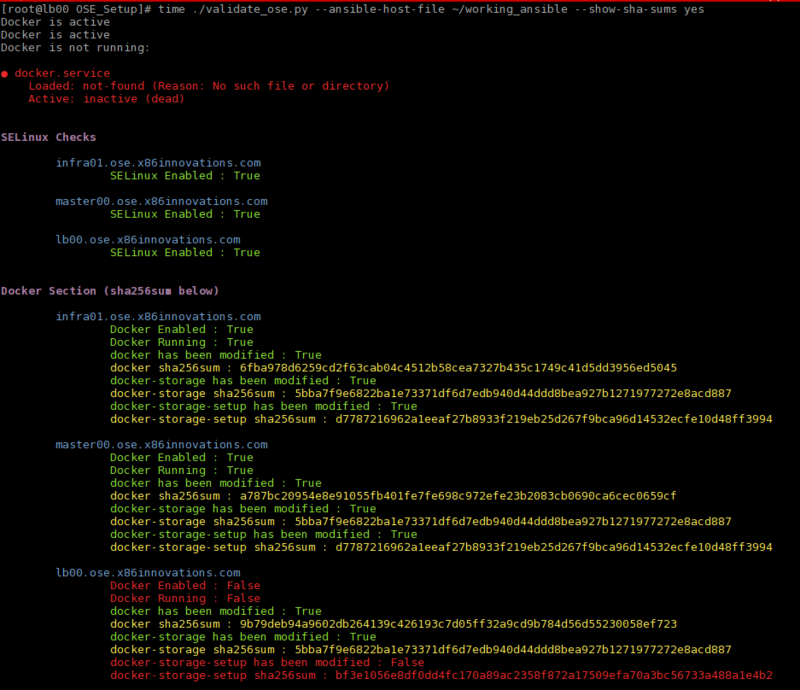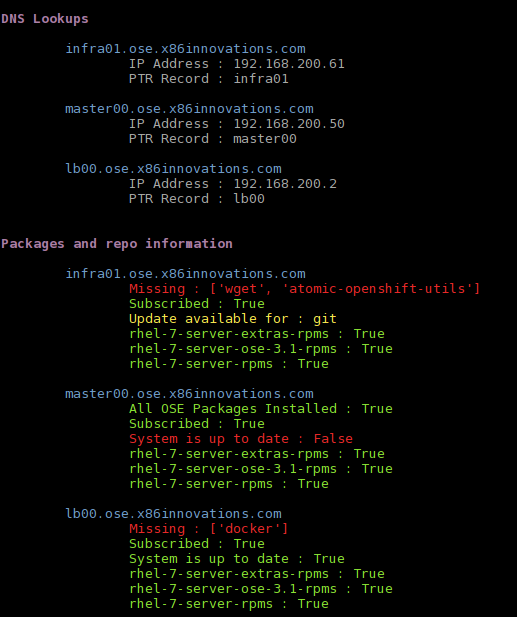A few comments:
- Docker shouldn't be a pre-requisite for running openshift-ansible, it should be pulled in as necessary.
- What is the purpose of warning if the docker-storage-setup file has been modified? We currently tell users to do this as a pre-requisite step in the installer docs.
- It would be really nice to see this implemented as a set of Ansible modules rather than a separate script. In general, I'm thinking a local pre-requisites module and a remote pre-requisites module. This would be something that we could then include in the installer proper, you wouldn't be able to colorize the output as much, but you would still be able to output warnings and errors. A callback plugin would also allow for better output to be provided using a wrapper script as well.
What does this PR do?
This pull request adds 2 class files and one executable script which test for the following
How should this be manually tested?
It has standard python usage help
This script is an audit only and will not do any changes on its own. It can be run like so:
show_shaw_sums is optional and can be omitted. ansible-host-file is required and the script will terminate if no host file is specified.
The script uses the following colourization schemes for more readable output.
The script expects to parse an ansible host file or a text file with a list of fqdns
Sample output:

Is there a relevant Issue open for this?
Open trello card: https://trello.com/c/ZzI1p8bN
Who would you like to review this?
/cc @etsauer @JaredBurck